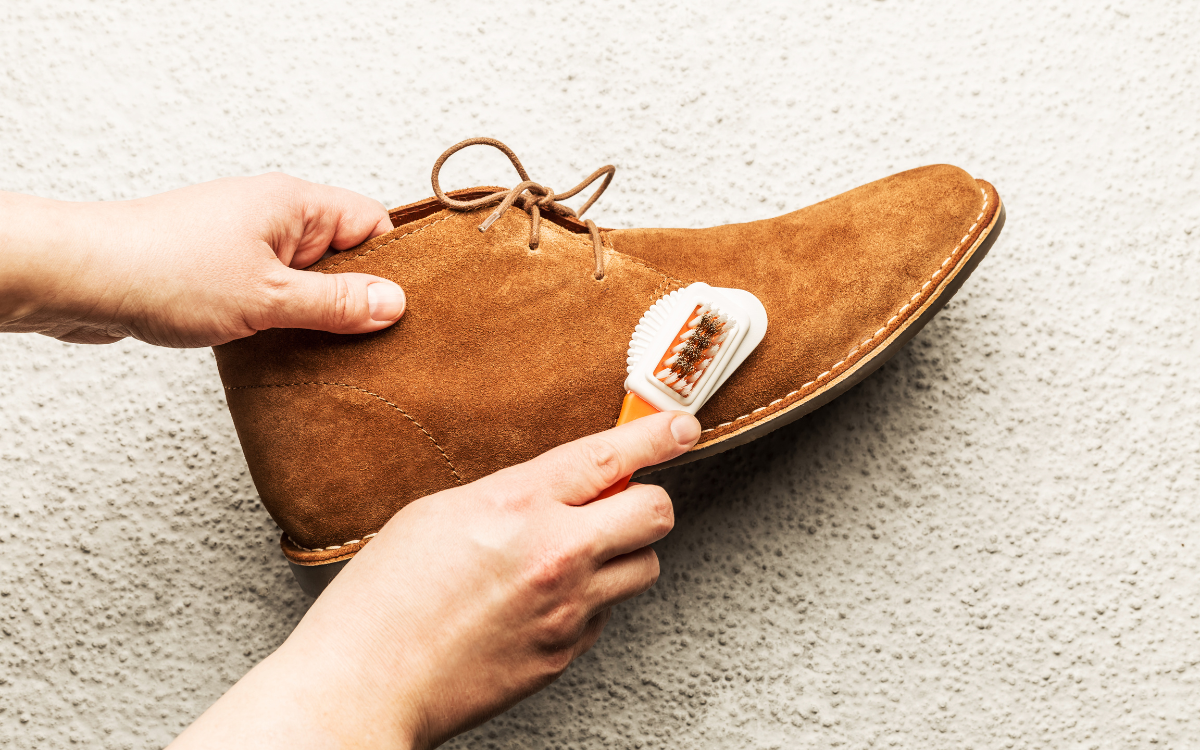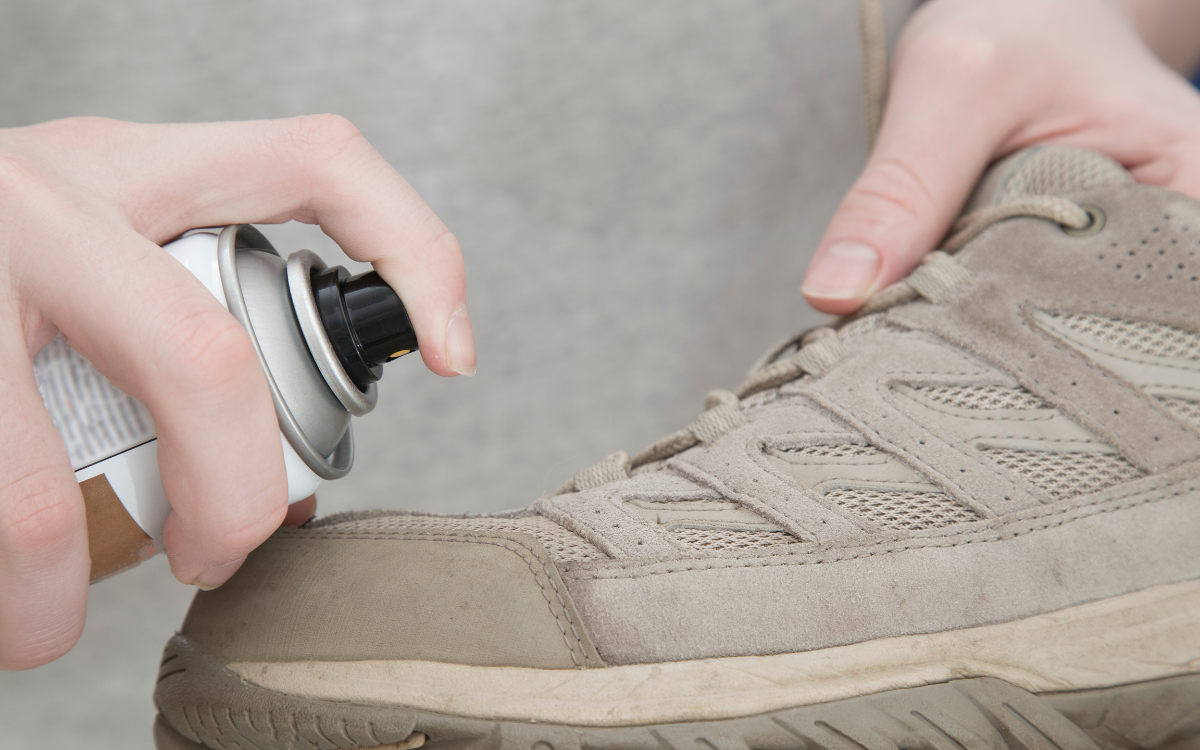How to Clean Fish Skin Boots? The Ultimate Guide
How to Clean Fish Skin Boots?
Fish skin boots are a unique and stylish type of footwear choice that is made from the skin of fish. It is known for their distinctive texture and durability. They are becoming increasingly popular due to their durability, water resistance, and unique appearance. However, fish skin boots can also be prone to dirt and stains. Proper care is essential to maintain their appearance and extend their lifespan. Therefore, it is important to know how to clean them properly to keep them looking their best.

Understanding Fish Skin Material
Before diving into the cleaning process, it’s crucial to understand the nature of fish skin. Fish skin, while possessing remarkable strength and resilience, is also a delicate material that demands gentle handling and care. Unlike traditional leather boots, fish skin boots require a more nuanced approach to cleaning, as harsh chemicals or abrasive methods can easily damage the scales and intricate patterns that define their appeal. Exploring the unique characteristics and vulnerabilities of this material sets the foundation for effective care.
Materials Needed
Gather the necessary tools and products for cleaning fish skin boots. This section will provide a detailed list, including soft brushes, mild detergents, and specific conditioners suitable for fish skin.
Essential Tools for Fish Skin Boot Cleaning
Before embarking on the cleaning process, assemble the necessary tools to ensure a successful outcome:
- Soft Cloth: Opt for a soft, lint-free cloth that is gentle on the delicate fish skin surface. Avoid abrasive or textured fabrics that may cause scratches or damage.
- Mild Soap: A mild, non-detergent soap is ideal for removing dirt and grime without stripping away the natural oils that keep the fish skin supple. Avoid harsh soaps or detergents, as these can harm the material’s integrity.
- Warm Water: Warm water is the preferred choice for cleaning fish skin boots. Avoid using hot water, as it can dry out the skin and make it more prone to cracking.
- Leather Conditioner: A high-quality leather conditioner specifically formulated for fish skin is crucial for maintaining its suppleness and preventing dryness. Avoid using conditioners designed for traditional leather, as these may not be compatible with the unique properties of fish skin.
- Soft-Bristled Brush: A soft-bristled brush, preferably made from natural fibers, is essential for buffing and restoring shine without damaging the scales. Avoid using brushes with stiff or synthetic bristles, as these can scratch the surface.

Pre-Cleaning Inspection
Conducting a pre-cleaning inspection helps identify stains, scuffs, or areas that require special attention. Understanding the condition of your boots guides the cleaning approach.
Cleaning Process
This section will outline a meticulous cleaning process, covering each step with precision:
- Removing Surface Dirt: Use a soft cloth to wipe down the boots to remove any dirt or debris. Use gentle methods to remove loose dirt and debris without causing damage.
- Addressing Stains: Techniques for tackling common stains on fish skin, such as water spots or oil marks.
- Using Mild Detergents: Guidelines on selecting and applying mild detergents suitable for fish skin without compromising its integrity.
- Brushing Techniques: Proper brushing methods to maintain the texture and appearance of fish skin.
- Drying Methods: The importance of air-drying and avoiding direct heat sources to prevent material damage.
Step-by-Step Guide to Cleaning Fish Skin Boots
Remove Loose Dirt and Debris: Before deep cleaning, use a soft, dry cloth to gently remove any loose dirt or debris that may have accumulated on the surface of the boots. This initial step helps prevent dirt from becoming embedded during the cleaning process.
Prepare the Cleaning Solution: Mix a small amount of mild soap with warm water in a bowl. Avoid using excessive soap, as this can leave a residue that can attract dirt and grime.
Clean the Boots: Dip the soft cloth into the soapy solution, ensuring it’s damp but not dripping wet. Gently wipe down the entire surface of the boots, working in circular motions to remove dirt and stains. Avoid scrubbing or applying excessive pressure, as this can damage the scales.

Rinse Thoroughly: Rinse the boots thoroughly with clean, warm water to remove any remaining soap residue. Use a soft, damp cloth to wipe away any excess water. Avoid leaving any soap residue, as this can attract dirt and cause discoloration.
Allow to Air Dry: Place the boots in a well-ventilated area away from direct sunlight or heat sources. Allow them to air dry completely before proceeding to the conditioning step. Avoid using artificial heat sources, as this can dry out the fish skin and make it more prone to cracking.
Condition the Boots: Apply a generous amount of leather conditioner specifically designed for fish skin. Use a soft cloth to spread the conditioner evenly over the entire surface of the boots, ensuring it penetrates into the scales and creases. Allow the conditioner to absorb fully, following the instructions on the product for the recommended drying time.
Buff for Shine: Once the conditioner has dried completely, use a soft-bristled brush to buff the boots gently. This will help restore their shine and enhance the natural texture of the fish skin. Avoid using harsh brushing techniques, as this can damage the delicate scales.

Actionable Tips for Fish Skin Boot Maintenance
Regular Cleaning: Regular cleaning is essential to maintain the pristine condition of your fish skin boots. Aim to clean them every few weeks or as needed, depending on usage and exposure to dirt and moisture.
Conditioning Frequency: Condition your fish skin boots every few months or as needed to maintain their suppleness and prevent cracking. Over-conditioning can lead to a buildup of product, making the boots appear greasy and attracting dirt more easily.
Wet Boot Care: Allow wet fish skin boots to air dry completely at room temperature away from direct heat sources. Avoid using artificial heat sources, as this can cause the fish skin to dry out and crack.
Storage Solutions: Store your fish skin boots in a cool, dry place when not in use.
Addressing Common Questions and Misconceptions
Can I use household cleaners on fish skin boots?
No, avoid using harsh chemicals or abrasive cleaners, as these can damage the delicate fish skin. Stick to mild, non-detergent soaps specifically formulated for delicate leather or fish skin.
How often should I clean my fish skin boots?
Regular cleaning is essential to maintain the condition of your fish skin boots. Depending on usage and exposure to dirt and moisture, aim to clean them every few weeks or as needed.
Can I condition my fish skin boots too often?
Over-conditioning can lead to a buildup of product, making the boots appear greasy and attracting dirt more easily. Stick to conditioning them every few months or as needed to maintain suppleness.
What should I do if my fish skin boots get wet?
Allow them to air dry completely at room temperature away from direct heat sources. Avoid using artificial heat sources, as this can cause the fish skin to dry out and crack.
How can I prevent my fish skin boots from cracking?
Regular cleaning and conditioning are crucial for preventing cracking. Additionally, store your boots in a cool, dry place when not in use to avoid excessive exposure to moisture or dryness.
Conclusion
Maintaining the pristine condition of your fish skin boots is a rewarding process that enhances their longevity and style. Armed with the right knowledge and tools, you can confidently tackle any cleaning challenge. Follow our guide, and step out in your favorite fish skin boots with pride.






